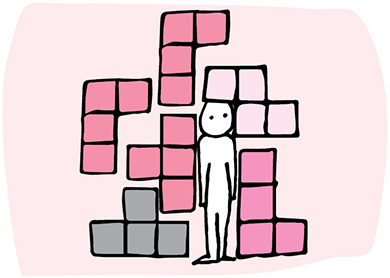Introduction
Where will the next major market opportunities emerge?

The hunt for the next big market opportunity is ever present. Most of us are ambitious company founders and good employees, managers, product designers, lecturers, or even professors. We all had cool business ideas at one time, such as the vision to build a revolutionary social network 3.0 that would outshine Facebook, to establish a health care system that suggests the best possible treatment option to patients and gives us health data sovereignty, and many more ideas.
It’s people like us who develop new ideas with great energy and tireless commitment, our heads filled with visions. To succeed, we usually need a (customer) need; an interdisciplinary team; the right mindset; and the necessary leeway for experimentation, creativity, and the courage to question what exists.
Across all sectors, it has become increasingly important to identify future market opportunities and enable the people inside organizations to work with agility and live creatively. Today’s planning and management paradigms are frequently not sufficient to respond appropriately to changes in the environment. Moreover, many companies have banned creativity in favor of operational excellence and management-by-objectives.
The old management paradigms must therefore be dissolved. But they will dissolve only when we allow new forms of collaboration, apply different mindsets, and create more room to develop and find solutions.
What are the three things that are important to us?
“No one needs to mutate into Karl Lagerfeld just because we have
creativity and room for development at our disposal!”
Because we are people with different personalities, it is vital we remain who we are today and continue to trust our experience and intentions in order to implement what we have gotten off the ground so far. And if there is one thing we have learned from Tetris, it is the fact we too often try to fit in somewhere—with the unfortunate consequence that we then disappear!

“Use the concepts and tips that you like
and adapt them to your needs.”
We decide on our own which mindset fits our organization, and whether we like the expert tips in this book or find them absurd and want to change them or adapt them to our situation. It would be a shame if all organizations were a clone of Google, Spotify, or Uber. Each company has its own identity and values. Even in Tetris, we have the possibility of turning things around at the last second so we’re successful in the end.

“Get the necessary skills, technologies, and attitudes on your teams to be successful and think in business ecosystems.”
We cannot develop products today with the mindset, design criteria, and needs from the past. Both users’ needs and the way we work together have changed, and we must have the necessary freedom and the skills to develop products and services, business models, and business ecosystems with agility in a digitized world. If we do not transform our organization, failed growth initiatives will pile up.

The Design Thinking Playbook will help you in the design of your transition to a new management paradigm. We all know such transitions from our customers’ needs. Let’s take as an example the transition from analog telephony to the smartphone all the way to a mindphone. While in the 1980s we only occasionally needed to take work calls at home, today we need to be reachable everywhere and anytime. In the future, we might want to control simple communications directly through our thoughts in order to eliminate the inefficient manual-entry smartphone interface. Successful companies have also created business ecosystems in which they closely integrate customers, suppliers, developers, and hardware manufacturers.

In this Playbook, we make the world of design thinking palpable—and we want to see you a little happier at the end! Because design thinking also creates happiness. And when you as readers are happy, we have been successful!
“Do you actually know the needs of your readers
for whom you’re writing the book?”
(Source: Direct quote from the first meeting of the editors and contributors of the Playbook)
Although we could very well picture ourselves as potential readers of such a playbook, we complied with the wish expressed in the question. In the design thinking style, we first determined the customer needs, created various personas, and developed much empathy for the work of our colleagues in order to establish a solid basis. Thus The Design Thinking Playbook is the first design thinking book that lives the mindset from the first to last page!
Because there is already a lot of design thinking literature on the market, we felt the need to show how design thinking is used optimally. We also want to help you professionalize your design thinking skills. And because the world does not stand still, we reflected on the digital paradigm and combined design thinking with other mindsets with the aim of becoming better and more innovative in a digitized world.
Enough of our introduction. Let’s focus on what’s essential—the specific and practical application of design thinking and expert tips. We tried to formulate the tips as comprehensible activities and ways of working. The “How might we . . .” instructions provided are supposed to be no more than indications for how we can proceed. Design thinking is not a structured process! We adapt the mindset and the approach to the particular situation.
